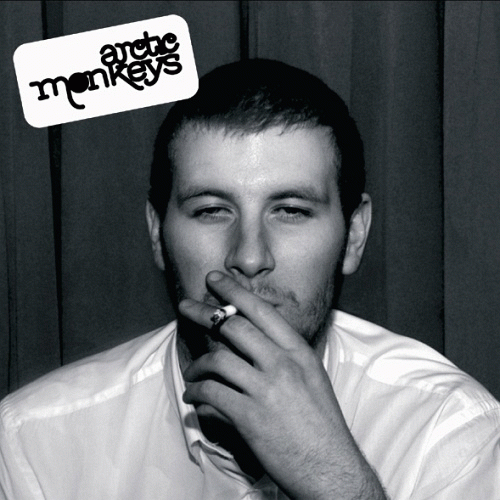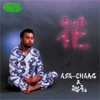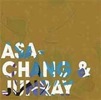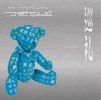
And so, on to a bit of an Arctic Monkeys jag. Is it not the worst band name? I mean really, it's one of the reasons why when Dawn Lewis kept going on at me about how brilliant 'I Bet You Look Good On the Dancefloor' was, I wouldn't believe her. Anyway, despite the fact that the aforementioned song is truly great, the single has one decent B-side and a pointless instrumental, so let's move on to the first album, Whatever People Say I Am, That's What I'm Not (2006). Well, everybody knows this one, it's a great record, but what really marks it out are the superb lyrics and phenomenal rhythm section. It's often pointed out that they have one of the finest rock drummers around and not for no reason, he's out of this world. In some ways, although Alex Turner's songs are really special, the life really comes out of the rhythm section and later on there's a high price to be paid for trying to restrain them for the sake of the songs. A brief mention of the Who the Fuck are the Arctic Monkeys EP (which is really the 'View from the Afternoon' single) which has a couple of great B-sides in 'Cigarette Smoker Fiona' and 'Despair in the Departure Lounge'.



Second album Favourite Worst Nightmare (2007) is the high point as far as I'm concerned. Superb album this, even when the songs are a bit obvious ('Brianstorm') and as a dissection of low-rent existence it makes Arab Strap's lyrics look like the most absurd juvenile nonsense. But the brilliance, lyrically, of Favourite Worst Nightmare is its comparison of real life to that of a now famous and successful band. Turner has no illusions about anything it seems, and the fact that one of his bandmates is going out with a topless model has no bearing on his own knowledge of the pitfalls, the tawdry pointlessness of fame and the illusion of contentment of the successful. It's fantastic stuff, tied to some bitingly vicious, and some painfully tender tunes. Many people find the album too obvious, but I think this is really something quite special, and again, what drumming... Then it's the come-down of third album Humbug (2009). Despite having a couple of really fabulous tunes ('Cornerstone' is lovely) the album feels like it was a weight to the band, a difficult and tiring process which means it has a strangely airless and flat feel to it, as if their own interest was waning. Indeed Turner was busy with other projects (passable Scott Walker impressions) and personal circumstances (hanging out in New York with Vogue botherer Alexa Chung - there's something - when did Vogue become an "advertorial" for people of the calibre of Alexa Chung? What happened to ethereal mysterious otherworldly models from all corners of the globe? It all seems to be children's TV presenters and second rate pop band members these days) and I think maybe the album was not a priority. In any event, it's the point at which I stopped paying any attention.


Now on to something altogether less vigorously male, and indeed much more delightful to listen to. It's the first album by part-time Múm member, Ólöf Arnalds called Við og Við (2007). This is super-special - beautiful little acoustic guitar or harp numbers and a stereotypically Scandinavian high, girlish voice. It's charm personified, a truly magical way to spend 40 minutes. Why haven't I bought the rest of her records?

Alright let's get multi-cultural for a change and dig some absolutely crazy tabla/electronica madness courtesy of Japanese tabla masters, Asa-Chang & Junray, starting with 1998's Tabla Mamba Bongo. This is an eclectic piece to say the least and the five tunes vary in tempo and styles quite wildy, and on occasion I can't help but feel that they sat down in front of the mikes and just bashed this stuff out on the spot without any pre-planning. Sitars, squelchy electronic noises, harmonicas, accordions, it's all the same to Asa-Chang, he'll bung in the lot. It's a challenging listen (sitting through 'Radio-No-Youni' is a trial), as is 2001's follow-up, Hana. However, the title song of Hana is quite fantastic, a drone based piece with strings, tabla and spoken word, which increases in both tempo and intensity quite sublimely over the course of its seven minutes. It's easily the best and most accessible thing that they recorded by far. The rest of Hana reverts back to the Tabla Mamba Bongo mould, in as much as it's nuts. The European release Jun Ray Song Chang (2002) is essentially just a compilation of tracks from the first two albums. Then we have Tsu Gi Ne Pu (2002), which starts off in a more relaxed fashion with sampled pipes gently sounding deep within a wealth of artificially created birdsong, into which gradually the tabla appears (and what sounds like a sample of the noise the doors in Star Trek made). Five minutes in though, we're off, tabla insanity and a kind of hyper-kinetic Japanese rap which, come the eight minute mark has been sped up, Pinky & Perky style into something perfectly unhinged, and that sets out the stall for the rest of Tsu Gi Ne Pu. It's an acquired taste, but it's fun and bonkers.




OK, so finally it's some not very good power pop. Ash made a lot of records and very, very few of them were any good. But on the rare occasions that they wrote a decent tune those tunes were very decent indeed. First mini-LP Trailer (1994) didn't have many, but listening back to it now it's a surprisingly dense and heavy record which gives it more clout than I remembered it having. It's a spunky little bunch of tunes and the all-pervasive punk-pop influence is youthfully and guilelessly plundered making for a pleasingly endearing listen. There's nothing really to write home about here but it's a cheerful and decent intro for a bunch of teenagers. First album proper, 1977 (1996), is a bit more serious in songwriting intent and that solves the problem of the flimsiness of the songs on Trailer but creates a new one in that there's not as much life to the album and it could have done with some serious editing down. All those bright early singles still sound OK ('Oh Yeah', 'Goldfinger', 'Kung Fu', 'Angel Interceptor' - 'Girl from Mars' was always rubbish though), but there are too many dead moments to keep the momentum up ('I'd Give You Anything', 'Gone the Dream', 'Lost In You' and dismal album closer 'Lightside Darkside). If ever a band existed for a singles compilation that you think you might get but never get round to, it was Ash. My copy of 1977 has Trailer and hours and hours of extra stuff most of which is redundant but there are some gems ('Punk Boy', 'T-Rex').


We're nearly there with A, just a few more days to go....
No comments:
Post a Comment